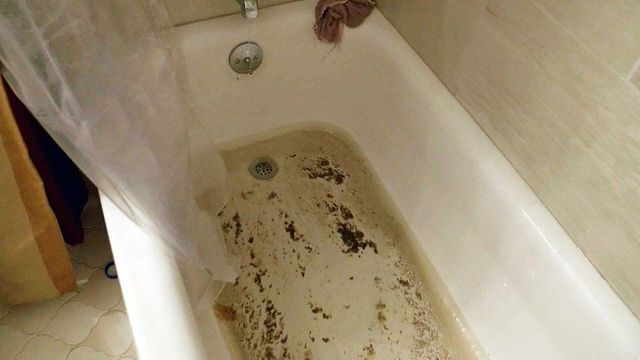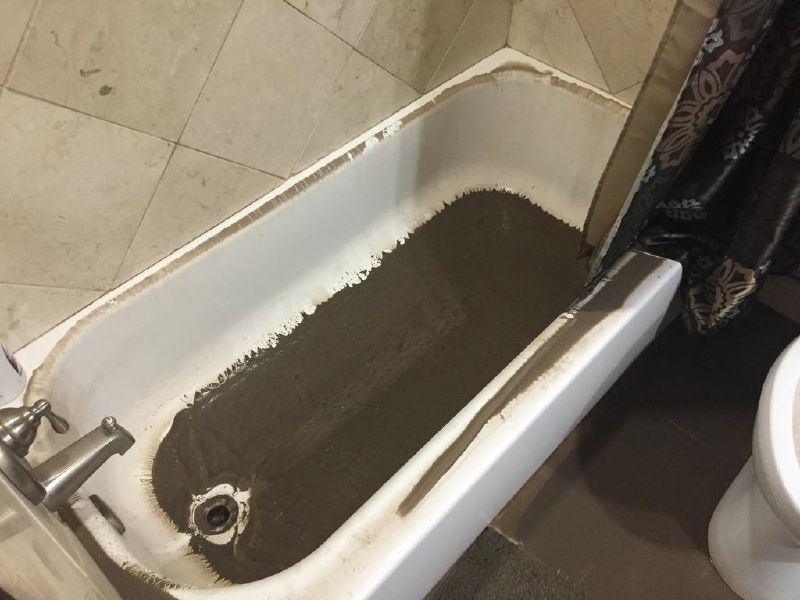My Guide to Effluent Emergence in the Bathtub
My Guide to Effluent Emergence in the Bathtub
Blog Article
What're your opinions about What to Do if Sewage Starts Coming Up Through Your Bathtub?

Sewer back-up in the tub can be a stressful and unhygienic trouble for any type of property owner. Not only is it troublesome, yet it additionally positions serious health dangers and indicates underlying problems with the plumbing system. Understanding why sewage is showing up with the bath tub is critical for taking suitable activity to address the issue effectively.
Intro to the Concern
Common Factors for Sewer Back-up
Obstructions in the Sewer Line
Among one of the most usual sources of sewer back-up is a clog in the drain line. This can occur as a result of the build-up of debris, grease, or international things in the pipelines, preventing correct flow and creating sewer to back up into your bathtub.
Tree Root Intrusion
Tree origins looking for wetness and nutrients can penetrate sewer lines via little splits or joints. With time, these roots can expand and broaden, creating substantial damage to the pipes and leading to sewage back-up concerns.
Understanding the Trouble
When sewer draws back up right into the bathtub, it's a clear indicator of an issue with the water drainage system. The wastewater that needs to be flowing away from your home is instead discovering its way back into your home, which can cause significant damage and health hazards.
Possible Causes
Several factors can add to sewage backup in the bath tub. From obstructions in the sewer line to concerns with the plumbing framework, recognizing the origin is necessary for locating an option.
Aging Infrastructure
Older homes might have obsoleted plumbing systems that are much more susceptible to corrosion, fractures, and degeneration. As pipelines age, they come to be more prone to leaks and blockages, enhancing the chance of sewer back-up occurrences.
Heavy Rainfall or Flooding
Throughout durations of heavy rainfall or flooding, the sewer system might become overloaded with excess water, creating back-ups and overflows. This can result in sewer supporting right into tubs and various other fixtures inside the home.
Indicators of Sewage Back-up
Foul Odors
Unpleasant smells emanating from drains or fixtures, particularly in the shower room, might show sewage backup problems. These odors are usually strong and relentless, signaling an issue that calls for prompt attention.
Slow Draining Fixtures
Tubs, sinks, and commodes that drain pipes gradually or otherwise in any way could be experiencing sewer backup. If several fixtures are affected concurrently, it's likely that the problem originates from a typical point, such as the main drain line.
Gurgling Noises
Weird gurgling or bubbling noises coming from drains when water is running somewhere else in the house are a sign of air caught in the plumbing system. This air accumulation can arise from sewage backup and should be examined immediately.
Wellness Dangers Associated with Sewer Backup
Contamination of Water System
Sewage back-up can pollute the water in your home, posturing a serious health and wellness risk to you and your family. Exposure to polluted water can bring about stomach issues, skin infections, and various other diseases.
Mold Development
Wetness from sewer backup can create ideal conditions for mold and mildew growth in your home. Mold and mildew spores can exacerbate respiratory system issues and trigger allergies in delicate individuals, making timely cleaning crucial.
Spread of Disease
Sewage includes unsafe germs, viruses, and bloodsuckers that can create a series of diseases, consisting of liver disease, cholera, and gastroenteritis. Entering into contact with sewage or infected surface areas places you at risk of infection.
Tidying up After Sewage Backup
Sanitation Procedures
Completely sanitize and sterilize influenced areas after sewage backup to eliminate hazardous microorganisms and protect against mold and mildew growth. Use ideal cleansing items and protective equipment to make sure risk-free and reliable clean-up.
Remediation of Influenced Areas
Repair any damage to flooring, wall surfaces, or fixtures caused by sewage back-up. Depending on the level of the damages, you may need to replace carpeting, drywall, or other products to recover your home to its pre-loss condition.
Immediate Actions to Take
Shutting Off Water
In case of sewer back-up, it's essential to switch off the water supply to avoid further contamination and damage. Locate the major water shutoff valve in your house and closed it off up until the concern can be solved.
Speaking To a Specialist Plumber
Taking care of sewage back-up is not a do it yourself task. Contact a qualified plumber with experience in dealing with sewage-related concerns to analyze the circumstance and do essential repairs or clean-ups.
Preventing Contact with Infected Water
Until the sewage backup is fixed, prevent contact with contaminated water to avoid the spread of bacteria and pathogens. Use safety gear if you must remain in the afflicted area and wash your hands thoroughly afterward.
Safety nets
Normal Maintenance of Drain Lines
Set up normal inspections and maintenance of your drain lines to determine and deal with potential problems prior to they intensify right into significant problems. This can consist of cleaning out particles, checking for tree origin intrusion, and repairing any kind of broken pipelines.
Installing Bayou Shutoffs
Consider setting up backwater shutoffs in your plumbing system to prevent sewer from flowing back right into your home throughout periods of heavy rainfall or flooding. These valves immediately close when water starts backing up, securing your residential or commercial property from contamination.
Correct Disposal of Family Waste
Prevent flushing anything other than toilet paper and human waste down the toilet to stop obstructions and blockages in the sewer line. Dispose of oil, oil, and other home chemicals properly to reduce the threat of plumbing issues.
Why Is Water Backing Up in My Bathtub When I Flush My Toilet?
What to do about a sewer line clog
First, don’t bother with plunging. No amount of plunging will dislodge the clog in a sewer line. The clog is too far away. Plungers are for clogs in the toilet itself, not the sewer line. Plus, the most likely causes of a sewer clog are:
Tree roots Flushed toys or feminine products Grease buildup Those items don’t move easily. And in the case of tree roots, the roots need to be cut out of the pipe and the pipe will need to be repaired.
You’ll need a closet auger. A closet auger is a type of plumber’s snake with a protective cover to keep from scratching the delicate porcelain toilet. If the clog is further down, you may need to remove the toilet or use one of your cleanouts to get to the clog.
We also recommend doing a video inspection of the drain to ensure that the cause of the clog has been completely removed. Otherwise, you could have the same problem again in a few days or weeks.
https://mspplumbingheatingair.com/blog/why-is-water-backing-up-in-my-bathtub-when-i-flush-my-toilet

I recently found that article about What To Do If Sewage Starts Backing Up Into the Shower when doing a search on the internet. Are you aware of somebody else who is interested by the subject? Feel free to promote it. We cherish reading our article about What To Do If Sewage Starts Backing Up Into the Shower.
Book Service
Report this page